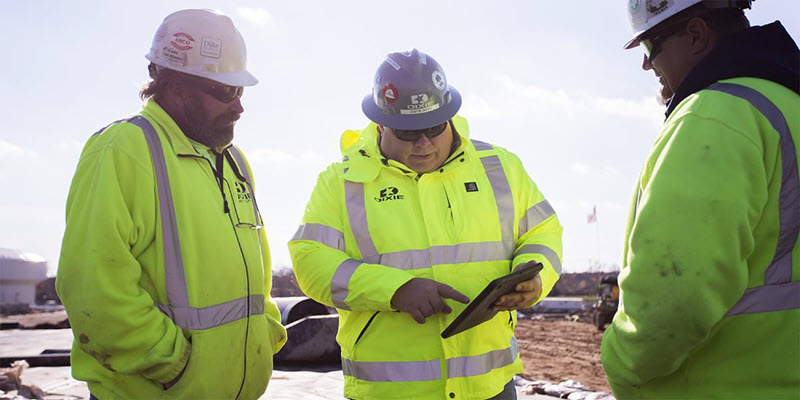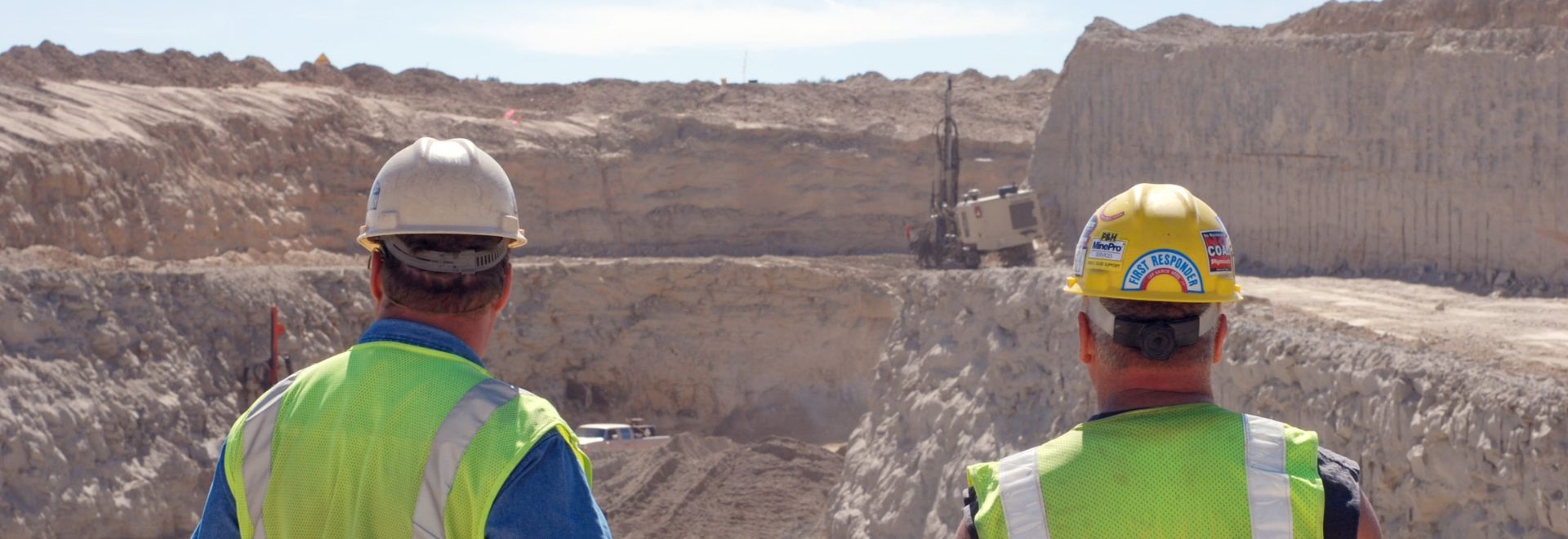A citation from a Safety Inspector can cost you $14,753 to $147,530, and it's easy for extra fines to get tacked on. Fortunately, with some shifts in enforcement focus, you can protect yourself from fines and reputation damage.
Make sure you are thoroughly prepared by training your team on the citations that inspectors will be the most rigid about in 2023.
5 Tips to Prevent Citations and Additional Fees
To kick things off, here's a quick cheat sheet of five incredibly effective ways to keep workers safe while helping to prevent citations and hefty fees:
- Regularly hold meetings or on-site training to educate Foremen on what to do when an inspector is on site.
- Test if Foremen know how to quickly show needed documents.
- Use the Inspections feature to train people on how to inspect to the proper standard.
- Prevent willful violations (which happen with repeated safety deficiencies) by hosting company-wide Incident reviews and watching leading indicators to understand who is at the highest risk for a repeated citation.
- Get operations involved in correcting problems by scheduling Project Managers to complete certain Inspections, submit Observations, and review the safety items that appear in their Daily Diary within HeavyJob.

3 of the Biggest Safety Penalties to Avoid This Year
Contractors face numerous obstacles year after year, and none of these three problems are new to the industry. However, rising injury rates and updated OSHA policies have resulted in these three safety concerns being important to watch out for to help keep workers safe: heat injury, trenching & excavation, and fall protection.
1. Heat Injury: New National Emphasis Program
Most of us are aware that there is a new national emphasis program on heat injury. This isn’t surprising considering how OSHA has recognized outdoor heat’s impact on the well-being of construction workers.
“I just had someone say to me the other day, ‘In actuality, just because of the temperature outside, OSHA can stop at your jobsite and do a focused inspection. [It’s] definitely something we need to think about.”
– Hope Matheny, Safety Trainer, HCSS
Recommendations to Combat Heat
Policy and procedure must be in place, which is one of the first things OSHA will ask to see when visiting the jobsite. Also, don’t forget that if you’re working in direct sunlight you may see a swing in temperature of up to 15 degrees.

Below are more recommendations to help prevent getting a citation:
- With HCSS Safety, you can use Additional Assessments within job hazard analyses (JHAs) to keep heat top of mind as a hazard. Managers can add the Additional Assessments to specific JHAs or in one click add them to all JHAs, which comes in handy during the summer months when most job sites are above 80 degrees Fahrenheit.
- You also have the ability to add in Heat-related toolbox talks you’ve created or use ones from the HCSS Meeting templates that you can download while in Meetings Setup. This makes it easier to ensure you have crews discussing the signs of heat exhaustion, as well as how to identify those signs.
- Create Heat Inspections to add or use ones from the HCSS Inspection templates that you can download while in Inspections Setup. HCSS Safety also lets you include an emergency plan that requires checking if workers know who to contact in case medical attention is needed, along with how to explain their location if an ambulance is required too.
- Downloading the OSHA-NIOSH Heat Safety Tool app makes it easy to see the heat index for their jobsite and get reminders about the protective measures needed.
- Get an Observations QR code that can be placed near water stations and shaded areas, then encourage crews to send in both positive and negative Observations. With HCSS Safety, you’re able to review these Observations to ensure teams aren’t deviating from your compliance goals, plus you can reward consistent observers.
2. Trenching and Excavation
As discussed in our past webinar and in the news, there has recently been a tragic rise in trenching fatalities in the industry. This is a call for all of us to push forward more and communicate better ways to convey risks and hazards that workers will be facing before they actually get into a trench.
“A competent person needs to be doing that before anyone gets into the trench. Inspections is a great place to plant an inspection that needs to be done.”
– Hope Matheny, Safety Trainer, HCSS
Recommendations for Excavation and Trenching
To help prevent citations surrounding trenching and excavation, you will have the power to implement the following recommendations using HCSS Safety:
- Different types of inspections are available that your team can choose from, such as a “Competent Person Excavation Checklist” or “Confined Space Safety Inspection Checklist” (both of which you can download and modify from the HCSS template library). You can even schedule inspections so your Superintendents and Foremen know exactly what needs to be inspected and how often.
- Train your crews with the basic level of knowledge that your team requires for working in or around trenches. Track who does and does not have the training through Skills. You can assign the Basic Trenching Skill in HCSS Safety or through Training Meetings with the Skill integration. Then, Foremen in the field can easily scan the Skills QR code on crew members’ badges or helmets to make sure they have the knowledge required before stepping into a trench.
- Schedule monthly safety meetings on how to handle questions from inspectors that will cover what specific training each person had, how to pull up your Skills or training documents, and how to identify hazards they are expected to recognize before starting work.
RELATED: Learn more about software features such as observations, near misses, inspections, and more with HCSS Safety.
3. Fall Protection
In the industry, fall protection and related fall hazards are always a focus because of the inherent risk of the work being performed. Gen Simmons mentioned that falls account for 34% of all construction fatalities.
“That's a focus of OSHA, always," Matheny said. "And it should be a focus for us too, because this is one of the four major categories where we see the most fatalities.”

Fall Protection Recommendations
You can leverage HCSS Safety software to make a change in the industry – beyond just avoiding citations – by looking at leading indicators and trends so you can identify when incidents are likely to happen. For fall protection, making Observations is what's really key to ensuring that employees can recognize and are aware of a situation where they're being exposed to a fall.
- HCSS Safety users should place the Observations QR code in areas where people are most likely to be able to see if there are any issues with fall protection or unnecessary risks being taken. Find ways to encourage sending in these Observations regularly. As a manager in HCSS Safety, you can filter Outstanding Items for any Observations with the Type of Fall/Slip/Trip.
- Auditing your safety program to see if you have been giving enough awareness to Fall Protection becomes much easier with the help of HCSS Safety. Review your Meeting History and Inspection History, not just for the number of times crews have focused on their fall risk, but also if crews have seen the same content over and over. Sometimes new ways to bring attention to hazards can help keep safety top of mind.
- If you see an increase in high-risk negative Observations, any Near Misses, or an Incident happens, then use it as a learning tool for all crews. You can schedule a Review Meeting for some crews or the entire company that breaks down the recent issue. This will serve as a stark reminder that falls are an ever-present danger that has already affected local crews recently.
- Create an incentive program for crews that makes them feel rewarded for being proactive about safety and contributing to keeping everyone on the jobsite safe. Make it clear to crews how they can be recognized or rewarded for sending in observations, meeting their metrics (Managers can review these in the Employee Metrics Report), or just regularly attending Meetings.
Learn More
Make sure you’re doing everything possible to be fully compliant with regulations by giving your sales rep a call or reaching us at 866-522-6602.



